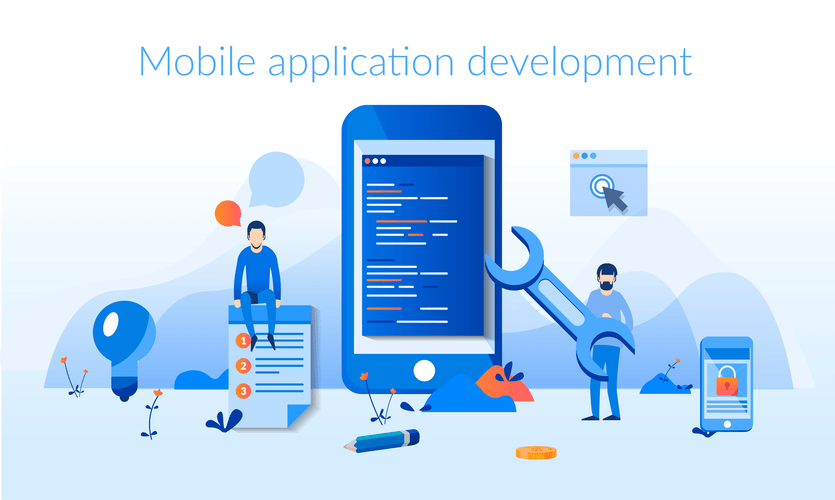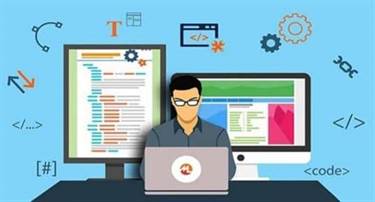The Importance Of Human-Centered Automation In Manufacturing
-
AUTHOR: admin
-
junio 2, 2023
The Importance Of Human-Centered Automation In Manufacturing
High-value, cost-effective AI solutions are more accessible than many smaller manufacturers realize. A network-based representation of the system using BoM can capture complex relationships and hierarchy of the systems (Exhibit 3). This information is augmented by data on engineering hours, materials costs, and quality as well as customer requirements.

A factory filled with robot workers once seemed like a scene from a science-fiction movie, but today, it’s just one real-life scenario that reflects manufacturers’ use of artificial intelligence. People often use the terms AI and machine learning interchangeably, but they’re two very different things. Machine learning puts data from different sources together and helps you understand how the data is acting, why, and which data correlates with other data. It helps you solve a particular problem by taking historic evidence in the data to tell you the probabilities between various choices and which choice clearly worked better in the past.
Quality Control and Defect Detection
AI systems can detect the differences from the usual outputs by using machine vision technology since most defects are visible. When an end-product is of lower quality than expected, AI systems trigger an alert to users so that they can react to make adjustments. Examples of possible upsides include increased productivity, decreased expenses, enhanced quality, and decreased downtime.
The following examples demonstrate AI’s value in augmenting workers’ knowledge and streamlining workflows.
A guide to artificial intelligence in the enterprise
By feeding parameters and requirements into generative design software, companies can obtain optimized design solutions that not only meet their criteria but also present options they might not have considered. These designs can then be what is AI in manufacturing tested and refined in the metaverse, leading to innovative and efficient real-world applications. Generative AI, a subset of AI, involves algorithms that can generate new content or designs from scratch, given a set of rules and inputs.
Eventually, 3 nm will do the same to 5 nm chips, but that won’t be for a few years. • Pattern recognition and signal processing methods are being used to analyze the health of the processing equipment and recommend maintenance at optimal intervals. It may surprise some that HR isn’t a top focus for chief executives or even their people ops leaders, but both functions agree that customer service is an area that will see quicker ROI in improving job quality.
Cost Reduction
Appinventiv’s expertise in developing cutting-edge AI and ML products specifically tailored for manufacturing businesses has positioned the company as a leader in the industry. Our expert-led courses and workshops provide learners with the knowledge and hands-on experience they need to unlock the full potential of NVIDIA solutions. NVIDIA Training offers customized training plans designed to bridge technical skill gaps and provide relevant, timely, and cost-effective solutions for an organization’s growth and development. HPC and AI enable new levels of collaboration and efficiency in product design, engineering, simulation, and prototyping.

ChatGPT has provided us the indisputable evidence that this long-awaited technology is entering a more mature—and more valuable—stage. The industrial manufacturing industry is the top adopter of artificial intelligence, with 93 percent of leaders stating their organizations are at least moderately using AI. Any change in the price of inputs can significantly impact a manufacturer’s profit.
Top 7 Data Modeling Tools You Need to Know in 2023
Raw material cost estimation and vendor selection are two of the most challenging aspects of production. Computer vision, which employs high-resolution cameras to observe every step of production, is used by AI-driven flaw identification. A system like this would be able to detect problems that the naked eye could overlook and immediately initiate efforts to fix them. Because of this, fewer products need to be recalled, and fewer of them are wasted. It improves defect detection by using complex image processing techniques to classify flaws across a wide range of industrial objects automatically.
- Using a robots-only workforce means a factory can potentially operate 24/7 with no need for human intervention, potentially leading to big benefits when it comes to output and efficiency.
- Once the AI software is trained, it can be used to inspect new car parts and identify any defects.
- Manufacturers can prefer AI-powered process mining tools to identify and eliminate bottlenecks in the organization’s processes.
- AI is still in relatively early stages of development, and it is poised to grow rapidly and disrupt traditional problem-solving approaches in industrial companies.
- For example, certain machine learning algorithms detect buying patterns that trigger manufacturers to ramp up production on a given item.
The average power plant, for example, has nearly 10,000 sensors that can generate over a million points of data every minute. “We choose QPR to help execute our vision of having the fastest and most reliable processes in the industry,” said Harri Puputti, senior vice president of corporate quality at Lindström Group. Consider the example of a factory maintenance worker who is intimately familiar with the mechanics of the shop floor but isn’t particularly digitally savvy. The worker might struggle to consume information from a computer dashboard, let alone analyze the findings to take a particular action.
Take a Deeper Dive Into AI for the Industrial Sector
Manufacturers can use knowledge gained from the data analysis to reduce the time it takes to create pharmaceuticals, lower costs and streamline replication methods. Instead, organizations can start by building a simulation or “digital twin” of the manufacturing line and order book. The agent’s performance is scored based on the cost, throughput, and on-time delivery of products. Next, the agent “plays the scheduling game” millions of times with different types of scenarios. Just as Deep Mind’s AlphaGo agent got better by playing itself, the agent uses deep reinforcement learning to improve scheduling.4“AlphaGo,” DeepMind, accessed November 17, 2022. Before long, the agent is able to create high-performance schedules and work with the human schedulers to optimize production.

This is done by using computer vision to analyze images or videos of car parts. The AI software is trained on a dataset of images of car parts that have been labeled as defective or not defective. Once the AI software is trained, it can be used to inspect new car parts and identify any defects. Moreover, according to a Deloitte survey, manufacturing happens to be the top industry in terms of data generation. Manufacturers will need to adopt AI to analyze this humongous amount of data generated in the sector.
Factory Automation
AI-powered demand forecasting tools provide more accurate results than traditional demand forecasting methods (ARIMA, exponential smoothing, etc) engineers use in manufacturing facilities. These tools enable businesses to manage inventory levels better so that cash-in-stock and out-of-stock scenarios are less likely to happen. Quality assurance is the maintenance of a desired level of quality in a service or product. These assembly lines work based on a set of parameters and algorithms that provide guidelines to produce the best possible end-products.
Advantages and Disadvantages of Artificial Intelligence
For example, certain machine learning algorithms detect buying patterns that trigger manufacturers to ramp up production on a given item. This ability to predict buying behavior helps ensure that manufacturers are producing high-demand inventory before the stores need it. There are many things that go above and beyond just coming up with a fancy machine learning model and figuring out how to use it. This capability can make everyone in the organization smarter, not just the operations person. For example, machine learning can automate spreadsheet processes, visualizing the data on an analytics screen where it’s refreshed daily, and you can look at it any time. Companies can teach AI to navigate text-heavy structured and unstructured technical documents by feeding it important technical dictionaries, lookup tables, and other information.
AI-powered software can help organizations optimize processes to achieve sustainable production levels. Manufacturers can prefer AI-powered process mining tools to identify and eliminate bottlenecks in the organization’s processes. For instance, timely and accurate delivery to a customer is the ultimate goal in the manufacturing industry. However, if the company has several factories in different regions, building a consistent delivery system is difficult.

0 comment